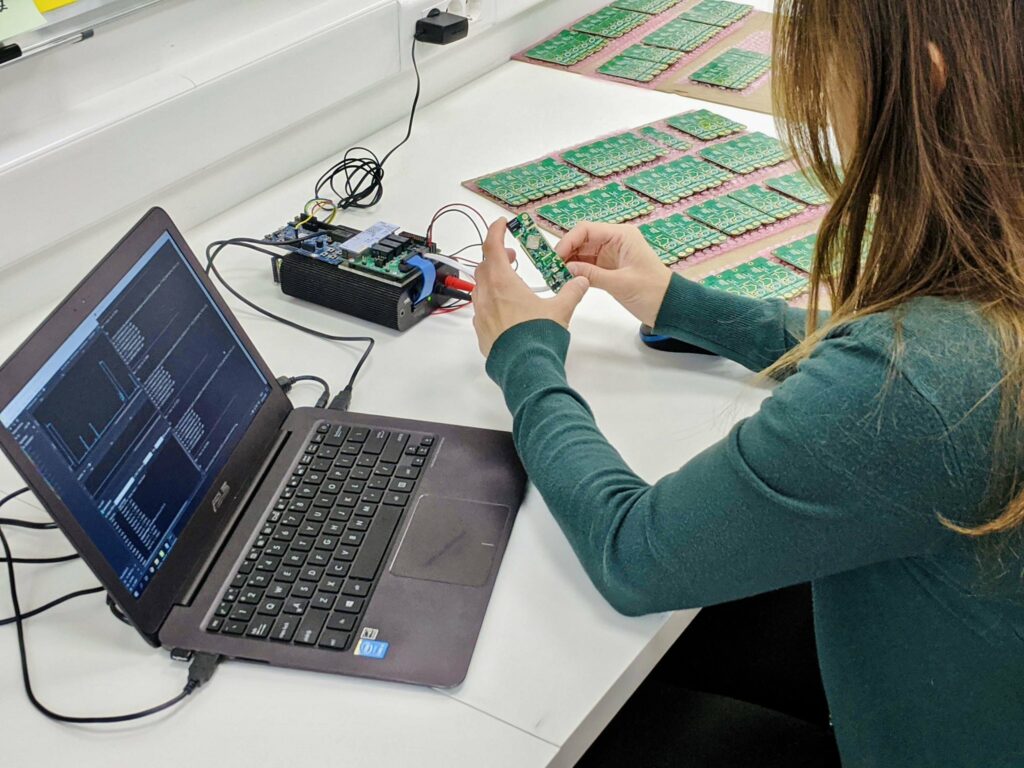IRNAS Use Case | Extending battery life for IoT devices in remote areas
IRNAS Use Case | Extending battery life for IoT devices in remote areas
There are cases and fields of application where you need something more specialized and tailored than a product off the rack. Slovenian company IRNAS knows this and is developing customer IoT solutions for challenging and remote environments. Focusing mainly on deploying tracking and monitoring systems in areas with limited access, they specialized in high-tech solutions ranging from industrial power-line sensors development, coverage mapping, low-power applications, edge computing off-grid devices for advanced sensors, and image processing in limited bandwidth scenarios.
It doesn’t take much to see that deploying devices in remote environments often involves significant costs and logistical issues. Consequently, the provider and customer must deliver a future-proof solution that requires little human intervention throughout the product’s life span. Going one step further, one could also say that it is in everyone’s interest to optimize its power consumption fully. It is essential to increase its longevity and ensure no unnecessary battery replacements are needed.
‘While a battery life counted in decades is already achievable with current technologies, it nevertheless requires a certain time investment. This is where Otii Arc Pro plays a crucial role as a tool to make this process easy.’
IRNAS also started working with alternative power harvesting approaches (e.g., plant power) that produce limited energy. The power optimization here is crucial.

“We keep power consumption in mind from Day 1. The key is to identify the instances of [device] use where power consumption is not a priority and then treat it as a top priority everywhere else. ”
As important as product longevity is and essential that batteries don’t fail unexpectedly, one should not disregard that development work must also be time-efficient. IRNAS is prototyping and developing highly specialized products for its customers and depends on a smooth, time-optimized workflow. Nothing is worse than reporting further delays and, inevitably, additional costs to the customer. Otii Arc Pro provides insights into what potentially drains or even kills a battery throughout the development cycle, helping them foresee pitfalls and avoid firefighting. With a strategically engineered work environment, a diverse and highly skilled team, and other HW and SW tools, IRNAS seems to have found the perfect setup for a time-efficient workflow.
“At the end of each of [the design’s] iterative cycles, there is a power consumption optimization step pre-delivery. This way, power optimization reaches its optimum at every step of the way and is, therefore, more manageable.”
Every new project usually starts with a bottom-up approach, with the prototype being the simplest version of itself. Creating this minimum viable device (MVP) quickly shows how low they could get in terms of power consumption. This way, they can deliver a prototype for a demonstration to the customer, allowing the customer to see and influence how the product will evolve for a specific use case. IRNAS refines the requirements and then adds new features. Using Otii products throughout every step is essential here, as more features mean more power consumption. Also, any change in HW or SW can unexpectedly affect the battery. You don’t want to add a cool new feature, cutting your battery life in half.
The IRNAS team uses Otii Arc Pro and Otii Automation Toolbox daily for development and validation. Coupled with a programming tool and a switchboard designed to manage their power output, they communicate with the Otii TCP server through an API written in Python. This way, the team can integrate Otii Arc Pro fully into their work processes, thereby automating power optimization. Further, they utilize UART communication with Otii to perform more advanced configurations of the power consumption analysis. In particular, it is used to evaluate an exact period or event during device operation (e.g., energy consumption between two messages).
IRNAS can minimize failure rates in development and deployment and, consequently, human intervention for solutions deployed in remote environments. Further, they save significant costs and increase the overall quality of their work. Through an optimized development process by monitoring power consumption, every step of the way and with little to no dependency on external partners, deadlines can be met, and customers are satisfied.
Become a member of our community
Gain access to exclusive resources, educational materials, and expert advice to enhance your knowledge and understanding of powering IoT devices and battery testing.